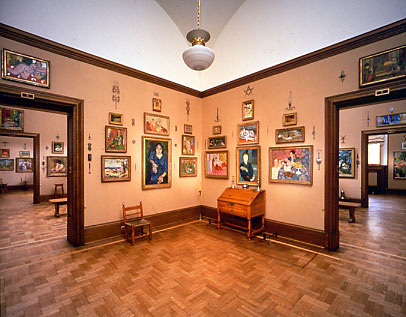
galleries of the Barnes Foundation
In a compact, tightly-argued piece in this morning's NYTimes Roberta Smith puts the brouhaha over the disposition of the collection of the Barnes Foundation into a clear perspective.
Once more we are reminded that no one really owns art, that all collectors are temporary custodians. And the greater the art, the less any one person, especially a dead one, can control its destiny.I feel compelled to add here that my respects come from someone who really loves old hinges but hasn't been to Merion, Pennsylvania.In the end, art belongs to the people it inspires, the people who use it to understand themselves and the world better - and the people who use it to create more art, and the possibility of more inspiration.
[image from new-york-art.com]
Old hinges? Old hinges? Oh DO please explain!
See the link on the words, "old hinges," and scroll down towards the bottom. Perversely, the image of hinges mounted around the paintings is what I always think of when I think "Barnes collection."
My personal connection to and affection for old ironwork dates to 1970, the year I bought a modest, run-down house on College Hill in Providence for $14,500. Within a few weeks my partner and I discovered it was actually built in the mid-eighteenth century and not around 1930, the time everything then visible had been slapped on.
But the sleuthing and sweat-restoration which followed for years is another story.
James go quickly. With all it's quirks and problems the Barnes in Marion is a one of a kind place. It's a 360 from the MOMA and you'll feel right at home. Maybe We can get Tyler to move in and run the place.